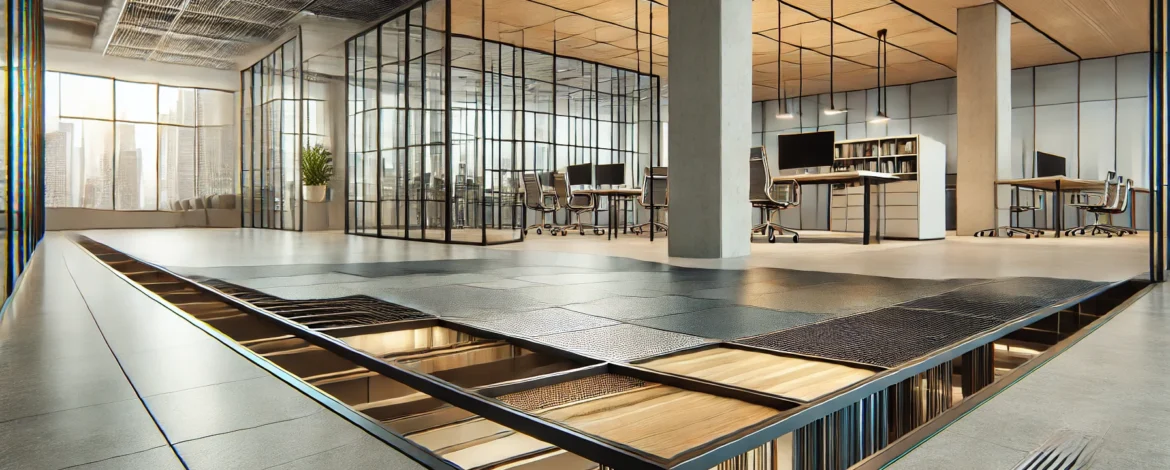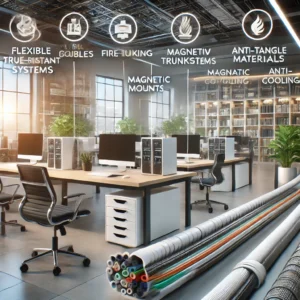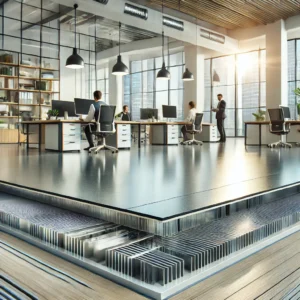Understanding Different Types of Raised Flooring Systems
Discover the ultimate guide to “Understanding Different Types of Raised Flooring Systems.” This comprehensive resource explores the various types, benefits, and applications of raised flooring systems, making it an ideal choice for modern commercial and residential spaces. Learn how to enhance aesthetics, functionality, and flexibility with the right flooring solution.
Understanding Different Types of Raised Flooring Systems
Raised flooring systems, also known as access floors, offer unparalleled flexibility and functionality, making them a preferred choice for commercial, industrial, and even residential applications. This flooring solution consists of a grid of modular panels elevated above the subfloor, creating a space for utilities like cables, HVAC systems, and plumbing.
Whether you’re designing a data center, modern office, or retail space, understanding the different types of raised flooring systems ensures you select the right solution tailored to your needs. From material choices to installation techniques, this guide provides a detailed overview.
Types of Raised Flooring Systems
1. Steel Cementitious Panels
Steel panels filled with cement offer durability, fire resistance, and a stable structure. These are ideal for heavy-duty applications such as server rooms and industrial areas.
2. Calcium Sulfate Panels
Known for superior acoustic performance and environmental sustainability, calcium sulfate panels are common in office spaces and retail stores.
3. Wood Core Panels
Constructed with a high-density wood core, these panels are lightweight and cost-effective. They’re suitable for environments where load-bearing isn’t the top priority.
4. Perforated Panels
Designed for enhanced airflow, perforated panels are perfect for data centers and spaces requiring efficient cooling systems.
5. Anti-Static Panels
These panels prevent static electricity buildup, making them essential in electronics manufacturing and laboratories.
6. Concrete Panels
Concrete raised flooring systems provide unparalleled durability and are ideal for industrial facilities where heavy machinery is used.
7. Glass Panels
Glass panels add a touch of elegance and transparency, often used in high-end commercial spaces and showrooms.
8. Aluminum Panels
Lightweight and corrosion-resistant, aluminum panels are suitable for environments exposed to moisture, such as maritime facilities.
9. Vinyl-Covered Panels
These panels combine functionality with aesthetics, featuring a vinyl finish for design versatility.
10. Bare Panels
Designed for customization, bare panels can be finished with carpet, tiles, or other materials based on the application.
Benefits of Raised Flooring Systems
- Cable Management: Streamlined infrastructure for cables and utilities.
- Enhanced Aesthetics: Sleek and modern designs suitable for various décors.
- Improved Air Circulation: Ideal for data centers and HVAC-intensive environments.
- Cost-Effective Maintenance: Easy access for repairs and upgrades.
Specifications Table for Raised Flooring Systems
| Feature | Description |
|---|---|
| Panel Material | Steel, Calcium Sulfate, Wood, Concrete |
| Panel Size | 600 x 600 mm (Standard) |
| Load-Bearing Capacity | Up to 1500 lbs per panel |
| Fire Resistance Rating | Up to Class A |
| Acoustic Performance | Noise reduction of up to 35 dB |
| Static Resistance | Anti-static properties available |
| Surface Finishes | Vinyl, Laminate, Bare |
| Perforation Rate | Up to 50% for airflow panels |
| Installation Height | 3 inches to 24 inches |
| Environmental Impact | Recyclable materials |
| Durability | Up to 25 years |
| Moisture Resistance | High in aluminum and cement panels |
| Weight | Lightweight (wood) to heavy (concrete) |
| Customization Options | Available for surface finishes |
| Certification Standards | ISO 9001, ASTM, CE |
Product FAQs
1. What is a raised flooring system?
A raised flooring system is an elevated floor structure that creates an accessible void for utilities like cables and HVAC systems.
2. Which type of raised flooring is best for offices?
Calcium sulfate or vinyl-covered panels are ideal for offices due to their acoustic properties and design versatility.
3. Can raised flooring systems handle heavy equipment?
Yes, steel cementitious and concrete panels are designed to handle heavy loads.
4. Are raised flooring systems customizable?
Absolutely. Panels come in various materials and finishes, and they can be tailored to meet aesthetic and functional needs.
5. How do I maintain a raised flooring system?
Regular cleaning and inspection ensure longevity. Panels can be lifted for utility maintenance.
Why Choose “Understanding Different Types of Raised Flooring Systems”
- Comprehensive Insights: Covers all types and applications.
- Expert Recommendations: Helps you choose the right system for your needs.
- User-Friendly Guidance: Simplifies complex information for easy understanding.
- Enhanced Decision-Making: Empowers you to select cost-effective and efficient solutions.
- Valuable Resource: Ideal for architects, facility managers, and designers.
Pros and Cons Table
| Pros | Cons |
| Flexible and customizable designs | Higher initial cost compared to traditional floors |
| Excellent utility management | Requires professional installation |
| Durable and long-lasting materials | May reduce ceiling height slightly |
| Suitable for various applications | Regular maintenance needed for optimal performance |
| Enhanced air circulation capabilities | Potential for noise if not properly installed |
|
|
|
|



